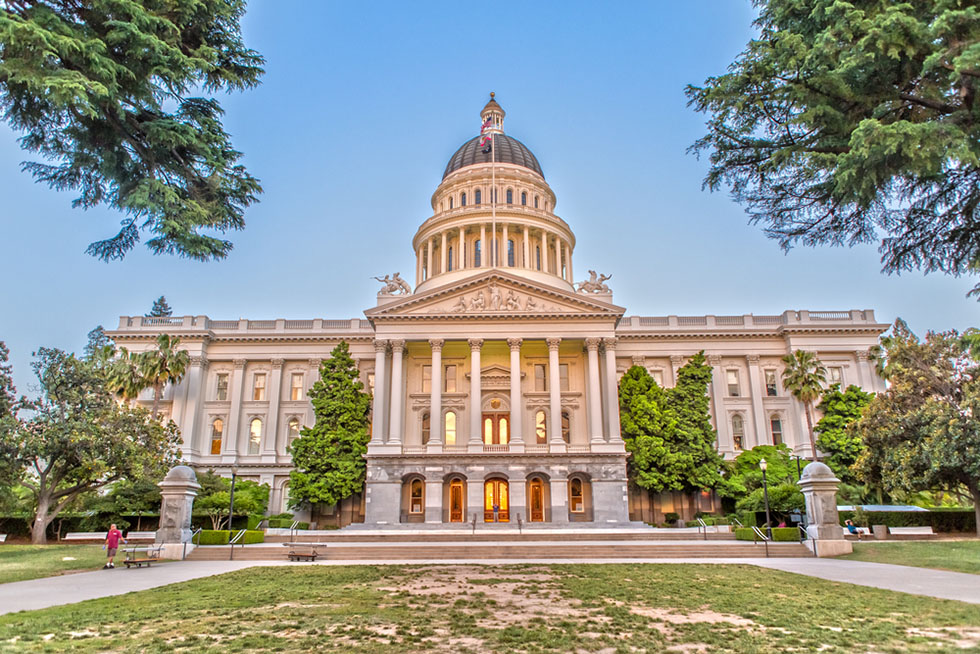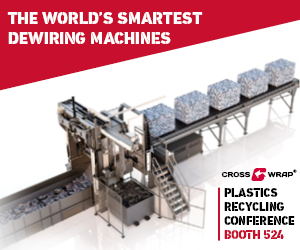
SB 353 aims to protect recycling companies from severe market fluctuations, which have been a factor in many closures. | Susanne Pommer/Shutterstock
A newly introduced bill in the California Senate would adjust how state regulators calculate the amount of money paid to bottle and can recycling businesses, helping those companies avoid steep financial losses when scrap values plummet.
The legislation, Senate Bill 353, would also expand California’s container redemption program by adding a deposit on all 100% juice containers, including those bottles 46 ounces and larger that are currently outside the program.
California Redemption Value (CRV), the Golden State’s bottle and can redemption system, requires that the state government provide processing payments to bottle and can redemption locations to bridge the financial gap between their costs of doing business and the revenues they gain from selling scrap plastic, glass and aluminum.
But the formula the California Department of Resources Recycling and Recovery (CalRecycle) is required to use can’t necessarily keep up with tumultuous markets in which scrap prices quickly rise and fall.
Current state law requires that CalRecycle base those payments on the prior 12 months of scrap value, which means if bale prices fall suddenly, CalRecycle’s payments aren’t reflective of the real-time revenues companies are getting from selling bales.
California has suffered widespread closures of redemption centers over the years, and many retailers are resistant to redeeming containers at their stores. As a result, consumers in many locations lack convenient ways to get their nickel and dime deposits back.
Introduced by Sen. Bill Dodd, D-Napa, on Feb. 8, SB 353 would allow CalRecycle to base processing payments on the preceding three-month average scrap value, instead of the prior 12-month average.
The bill would also add larger fruit juice containers to the program starting Jan. 1, 2024.
“Creating an incentive for people to recycle these containers will help reduce the amount of waste we are currently just bulldozing into the ground,” Dodd stated in a press release. “This bill will also provide a financial lifeline to recycling centers and processors while helping consumers maximize their options for redeeming their deposits on beverage containers.”
Mark Murray, executive director of advocacy group Californians Against Waste (CAW), supports SB 353. His group has long been influential with recycling-focused lawmakers in Sacramento.
Murray said CalRecycle in January calculated the current cost of recycling CRV containers at about $555 per ton and average scrap value at $470 per ton, leading to a 2023 processing payment of $85 per ton. But that scrap value calculation is partly based on the high prices seen during the first half of 2022. Those prices subsequently collapsed later in the year.
As a result, the processing payment is currently falling woefully short of what’s needed, with the shortfall at around $345 per ton, Murray said. He estimates that if CalRecycle were able to look only at the last three months of prices, the processing payment would be around $430 per ton, not $85.
The processing payment calculation problem has been recognized for many years.
“We’ve been advocating for a change like this to the calculation of processing payments since 2016, when we first produced a report that explained how these payments were hurting recycling centers, and causing them to go out of business,” said Susan Collins, president of the Container Recycling Institute (CRI), which advocates for bottle bills.
She noted that “now there is broad agreement amongst stakeholders that this change would be beneficial for recycling businesses and consumers in California.”
Collins added that California now has 1,267 redemption centers, down from 1,777 in mid-2016.
On the business side, Plastics Recycling Corporation of California (PRCC), which brokers PET bales, is also a supporter of SB 353.
“As the stewardship organization for plastic containers in California’s Bottle bill, we commend the senator expanding the bottle bill to include all juice bottles and to make the system more responsive to market forces,” Sally Houghton, PRCC’s executive director, stated in Dodd’s release. “This will help get more containers recycled and turned back into bottles in a cost-effective manner.”
The bill is just one of many CRV-related proposals to come before California lawmakers in recent years. Legislators last year passed bills updating the CRV program, including by adding wine and spirits and requiring retailers to participate in establishing redemption locations.



